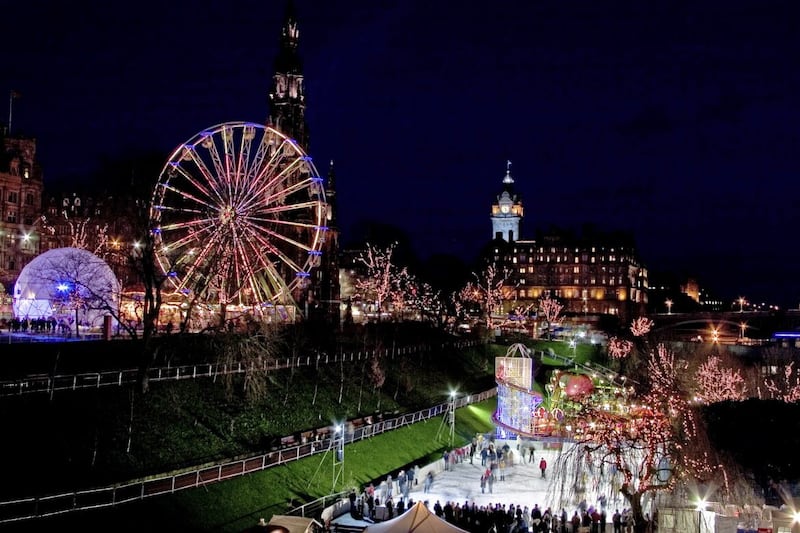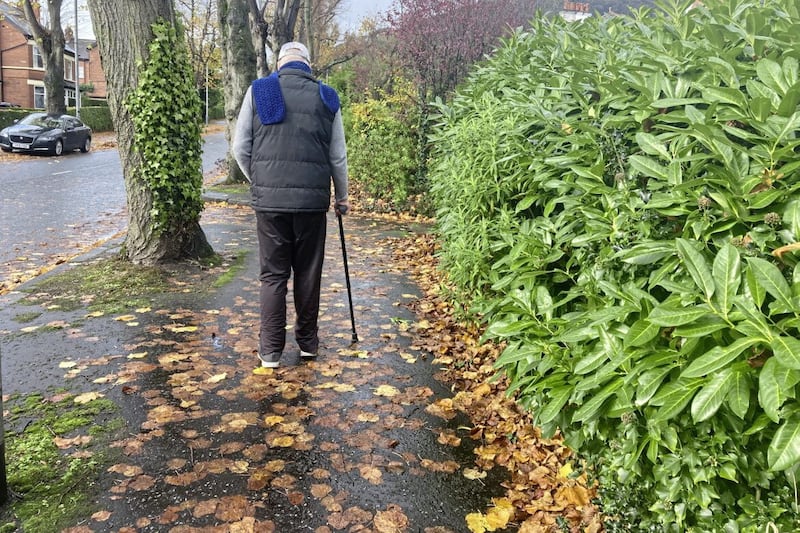IN 1960 Ulster Television newsman Ivor Mills was invited to the Ritz Cinema Belfast to attend the morning preview screening of the epic Ben Hur starring Billy Millar. There was great excitement. The press were out in force and personalities were in attendance.
As Mrs Millar from Glengormley, mother of the star, was coming down the steps on to Fisherwick Place, Ivor asked her had she enjoyed the film. “Well,” she confided, “it was a long sit.”
At three hours and 42 minutes it certainly was. But every minute was incredible. Before reading Joe Cushnan’s new book on the subject I decided to view the film myself and I was gripped. I was especially fascinated with Mrs Millar’s son, better known to us all as Stephen Boyd.
:: Read all about our boy
Although this film was probably the height of his movie career, Boyd made over 60 films. Joe writes that not all of them were of such a high standard – indeed, some of them were real turkeys.
Joe’s book, Stephen Boyd: From Belfast To Hollywood, is a very thorough account of the actor’s progression from Whitehouse, where he was born on July 4 1931, to living in Glengormley and attending Ballyclare High school, a heathy young man who loved sport, hockey, boxing and weightlifting.
He was also interested in amateur dramatics and joined the Ulster Group Theatre in 1950; he played the part of an IRA man in Juno and the Paycock. He was building a career, became well known as the policeman in the McCooeys Radio Ulster radio series but, like many before him, the lights of the big city shone brightly, inviting him to London where he survived as a busker although it was as doorman at the Odeon Cinema in Leicester Square that he got his big break.
He and actor Michael Redgrave got chatting, Boyd told Redgrave he was looking for acting work and before long he was introduced to a theatrical agent who immediately signed him up as a member of the Midland Theatre Company.
The young man left his native Northern Ireland as Billy Millar and stepped on to a bigger stage as Stephen Boyd. He proved himself to be a fine theatrical actor and he was offered more and more parts; television work followed, where he appeared with stars like Diana Dors, James Robertson Justice and Stanley Holloway.
In 1956 he played the part of Patrick O’Reilly the Irish spy in the acclaimed film The Man Who Never Was, the true story of the body of a young man dressed as a Royal Marine officer carrying false top secret documents.
The body was launched from a submarine and was picked up off the coast of Spain; the misleading documents made their way to Berlin, fooling Hitler and German Intelligence. It was a successful film and Boyd was rated the most promising newcomer with "his bewitching brogue and his chin dimple".
:: The man behind the man
What makes this book so valuable is the research. Joe has contacted stars who worked with Boyd, as well as directors, fans, friends and family, and he reproduced their memories as written letters and interviews. There are Boyd’s own words and a very personal foreword by the late James Ellis.
The author discovered that Boyd was a popular man who couldn’t put up with insincerity and was apt to speak out. He was 28 when he was cast as Messala in Ben Hur alongside Charlton Heston but he fell foul of gossip columnist Louella Parsons who reported Boyd’s comments on Ulster and Irish politics and the religious situation which may have been responsible for him being denied a Ben Hur Oscar although he did receive recognition as best supporting actor.
He became an American citizen but never forgot his family at home, wrote two letters a week to his mother and bought his parents a house in Glengormley which they named Massala.
He was a pin-up. If you had the poster advertising Ben Hur you had gold dust. He doesn’t appear to have been a womaniser; there was talk of an implied relationship between Massala and Ben Hur but no evidence that he was in fact gay.
His marriage to Mariella di Sarzana in 1958 lasted only three weeks and he didn’t marry again until a few months before he died when he and long-time friend Elizabeth Mills tied the knot.
The details of his experiences in Ben Hur are fascinating. He had to wear lifts in his shoes to measure up to Heston; he also had to wear contact lenses so he’d have brown eyes, in contrast to Heston’s blue. The chariot race is famous and it’s breathtaking. Boyd is superb and brave among 15,000 extras, five weeks' filming. It took £15 million to make and grossed £75m.
There was no shortage of film roles, more than 60 in all, and he rubbed shoulders with the greats – Paul Newman, Dionne Warwick, Brigitte Bardot, Peter O’Toole, Rita Hayworth, Omar Sharif – the list of co-stars goes on.
Despite his undoubted acting success he began to fade out of the headlines in the late 60s although he made a comeback in the American series Hawaii Five-O.
This is a very fascinating book, the detail is exceptional and it does homage to a star who never received the acclamation he deserved, especially in his home place.
On a June day in 1977 just as he was about to sign for a major film with Richard Burton, Roger Moore and Richard Harris, during a game of golf he suffered a heart attack. He was rushed to hospital in the San Fernando Valley but within an hour he was dead. He was only 45 years of age, an undoubted star who preferred being known as a working character actor.
Stephen Boyd would have been 90 this July 4 so it’s about time someone took the time to put him firmly on the map. Joe Cushnan has done just that.
:: Stephen Boyd: From Belfast To Hollywood by Joe Cushnan is published by FeedARead.com









